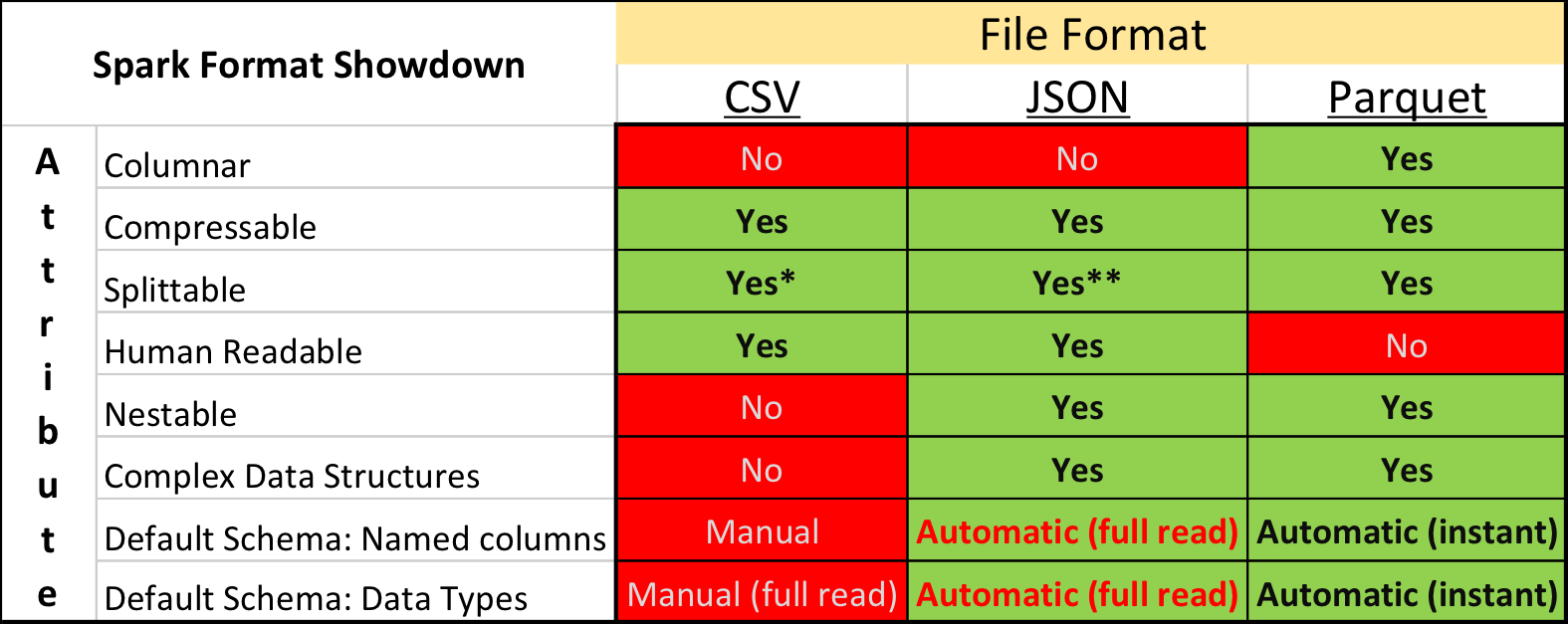File Format
A File Format is a specification governing the encoding and structure of a digital file.
- Context:
- It can range from an Unstructured File Format to a Fully-Structured File Format.
- It can range from a Human-Readable File Format to a Machine-Readable File Format.
- It can be an Information-Type Specific File Format, such as: Document File Format, Audio File Format, Image File Format, Video File Format, Executable File Format, and Archive File Format.
- It can be referenced by a File Conversion Task to change from one File Format to another.
- It can range from being an Open File Format to being a Proprietary File Format.
- Context:
- It can range from being an Unstructured File Format to being a Fully-Structured File Format.
- It can range from being a Human-Readable File Format to being a Machine Readable File Format.
- It can be an Information-Type Specific File Format, such as: Document File Format, Audio File Format, ...
- It can be referenced by a File Conversion Task.
- …
- Example(s):
- a Linguistic Information-Centered File Format, such as:
- a Text File Format, such as: .TXT, .MD, ...
- a Marked-Up Text File Format, such as: .WIKI, .MD, .HTML, .LaTeX, ...
- a Document File Format, such as: .PDF, .RTF, .ODF, .DOCX, ...
- …
- a Structured Data File Format, such as: .CSV, .TSV, .JSON, .XML, .XLSX, Parquet Format, ORC Format, ...
- a Visual Information-Centered File Format, such as:
- a Presentation File Format, such as: .PPTX, ...
- an Image File Format, such as: JPEG, PNG, GIF, ...
- an Audio File Format, such as: MP3, WAV, AAC, ...
- a Video File Format, such as: MP4, AVI, MKV, ...
- an Executable File Format, such as: .EXE, .APP, .SH, ...
- an Archive File Format, such as:
- …
- a Linguistic Information-Centered File Format, such as:
- Counter-Example(s):
- a Data Structure.
- a [[Networking Protocol].
- an API.
- See: Format, Data Standard, Data Exchange, File Format Converter.
References
2023
- (Wikipedia, 2023) ⇒ https://en.wikipedia.org/wiki/File_format Retrieved:2023-9-11.
- A file format is a standard way that information is encoded for storage in a computer file. It specifies how bits are used to encode information in a digital storage medium. File formats may be either proprietary or free.
Some file formats are designed for very particular types of data: PNG files, for example, store bitmapped images using lossless data compression. Other file formats, however, are designed for storage of several different types of data: the Ogg format can act as a container for different types of multimedia including any combination of audio and video, with or without text (such as subtitles), and metadata. A text file can contain any stream of characters, including possible control characters, and is encoded in one of various character encoding schemes. Some file formats, such as HTML, scalable vector graphics, and the source code of computer software are text files with defined syntaxes that allow them to be used for specific purposes.
- A file format is a standard way that information is encoded for storage in a computer file. It specifies how bits are used to encode information in a digital storage medium. File formats may be either proprietary or free.
2017
- http://garrens.com/blog/2017/10/09/spark-file-format-showdown-csv-vs-json-vs-parquet/
- QUOTE: Apache Spark supports many different data sources, such as the ubiquitous Comma Separated Value (CSV) format and web API friendly JavaScript Object Notation (JSON) format. A common format used primarily for big data analytical purposes is Apache Parquet. ...

- QUOTE: Apache Spark supports many different data sources, such as the ubiquitous Comma Separated Value (CSV) format and web API friendly JavaScript Object Notation (JSON) format. A common format used primarily for big data analytical purposes is Apache Parquet. ...
2011
- (Wikipedia, 2009) ⇒ http://en.wikipedia.org/wiki/File_format
- QUOTE: A file format is a particular way that information is encoded for storage in a computer file. ...
2009
- Wiktionary.
- format (plural formats)
- 1. The layout of a document.
- 2. (hence) The form of presentation of something. The radio station changed the format of its evening program.
- 3. (computing) A file type.
- format (plural formats)